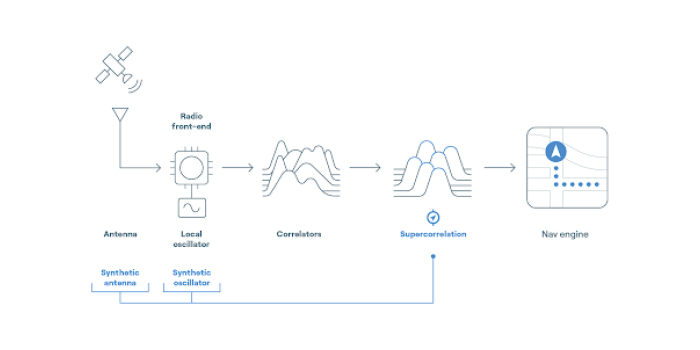UK software company FocalPoint, which provides next-generation positioning technologies, has announced the launch of the S-GNSS Auto positioning product, which provides automotive OEMs with increased reliability and accuracy of GNSS positioning.
S-GNSS Auto effectively extends hands-free driving assistance technologies in urban environments and is a software-based GNSS enhancement to mitigate the urban multipath problem for AVs.
Representing a unique sensor within the ADAS perception system alongside cameras, radars and lidars, GNSS provides vital high-precision positioning and situational awareness to the automotive planning and control subsystems.
Standard GNSS sensors typically locate you to within 1-2m error in rural and suburban environments with support from correction services and fusion with car sensors like wheel odometry and IMUs. However, in dense urban environments this is not possible due to interference caused by signal reflections (known as multipath interference).
Powered by FocalPoint’s Supercorrelation technology, S-GNSS Auto provides absolute lane-level positioning in urban areas for advanced driving features, effectively expanding Level 2 ADAS capability into different and more challenging environments.
Setting a new standard for urban performance and cyber-security, S-GNSS Auto provides a uniquely cost-effective software solution, typically only associated previously with expensive hardware or infrastructure. The software can run either on the GNSS chip or the operating system, providing auto makers with a scalable upgrade to their ADAS and hands free systems, the company says.
Urban multipath interference is a phenomenon that occurs when GNSS signals bounce off buildings, trees or other obstacles before reaching the receiver, resulting in multiple copies of the same signal arriving at the antenna at slightly different times. This can cause errors in the GNSS position calculation, which will become particularly problematic for automated driving as these features become available in urban areas. The receiver may calculate the position based on the wrong set of signals or be unable to determine which signals to use accurately.
“S-GNSS Auto works by recognizing and discarding reflected GNSS signals, in doing so it improves the performance of GNSS by 10x or more, meeting three of the most pressing needs in the modern navigation industry: accuracy, reliability and integrity,” said Ramsey Faragher, founder and CTO of Focal Point.


